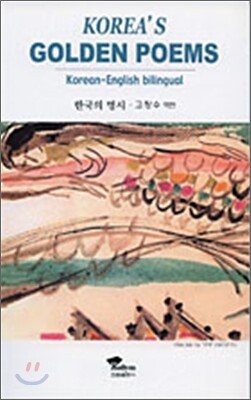Ko Chang Soo (born December 5, 1934) is a Korean poet and diplomat.
Life
Ko Chang Soo was born in Hungnam, South Hamgyong Province, in 1934. He studied English literature at Sungkyunkwan University, obtaining a Ph.D. in 1982 with a dissertation on Buddhist thoughts in T. S. Eliot's Four Quartets.
From 1965 to 1996 he worked as a career diplomat, serving as South Korean consul general in Seattle, Washington in the United States and ambassador to Ethiopia and Pakistan.
Ko made his literary debut publishing his poems "Papyeon jumneun norae" (파편 줍는 노래), "Dosiui bam" (도시의 밤), and "Hwapokwansang" (화폭환상) in the 1965 and 1966 issues of Shimunhak, upon the recommendation of poets 김현승, 김춘수, 이영순, respectively.
His poems, in Korean and in English translation, have appeared in a number of Korean and American textbooks, including World Poetry (W.W. Norton), ViewPoints Grade 11 (Pearson Education Canada), and Curious Cats (The Metropolitan Museum of Art, New York).
Ko has won various Korean poetry prizes as well as the Lucian Blaga International Poetry Festival Grand Prize in Romania. Some of his poetry has also been translated into Spanish. As a translator, he won the 1980 Korea Times Modern Korean Literature Translation Award.
Writing
Ko's poetry is written in Korean, but he has translated much of his own as well as other Korean poetry.
Much of Ko's poetry reflects his knowledge of Western culture and literature, as seen in such poems as "Syagarui geurimeul bomyeo" (샤갈의 그림을 보며 To Marc Chagall). Other poems examine and reflect on his experience in Korea, e.g., "Hangung maeul jeongwoneseo" (한국 마을 정원에서 In a Remote Korean Village), and other places around the world, e.g., his long poem, "Mohenjo-Daro" (모헨조다로 Mohenjo-Daro). Many, though not all, of his poems are set out-of-doors. Some of these place the poet in the setting.
Although Western poets such as T. S. Eliot and Rainer Maria Rilke have been large influences on his work, Ko said it had also been shaped by Zen poetry. His epigrams are also strongly reminiscent of “sijo,” a traditional form of Korean poetry characterized by short, potent verses.
Sa poésie est écrite en coréen. En plus d'avoir publié un certain nombre de livres de poésie, certains de ses poèmes ont paru dans des revues telles que Viewpoint 11 et Curious Cats. Il a remporté plusieurs prix de poésie coréenne, ainsi que le Grand Prix du Festival International de Poésie Blaga Lucian en Roumanie. Certaines de ses poésies ont également été traduites en espagnol. Il a également remporté le Prix de la Traduction de Littérature Moderne en Corée.
Une grande partie de sa poésie reflète sa connaissance de la culture et de la littérature occidentales, comme on peut le remarquer dans son poème, Pour Marc Chagall. D'autres poèmes lui permettent d'examiner avec du recul son expérience en Corée, comme par exemple Dans un village coréen à distance, mais aussi d'analyser d'autres cultures avec par exemple son long poème intitulé Mohenjo-Daro.
고창수(1934~)는 대한민국의 시인이며 외교관이다.
생애
고창수는 1934년 함경남도 흥남에서 태어났다. 성균관대 영문과를 졸업했고 경북대학교에서 석사학위를, 성균관대학교에서 박사학위를 취득했다.
1965년에 시 〈파편 줍는 노래〉, 〈도시의 밤〉, 〈화폭환상〉이 《시문학》에 추천되며 작품 활동을 시작했다. 또한 1965년 영국문화원 주최 세익스피어 단편소설 경연대회(Shakespeare Short Story Contest)에서 영문 단편소설이 입선된 바 있고, 1980년 《코리아타임즈》로부터 한국문학번역상을 수상한 바 있다. 한글과 영문으로 창작 활동을 하는 한편 한국시의 번역도 적극적으로 하고 있다.
작가는 1965년부터 외무부에서 외교관으로 국제문화협력대사. 주 인도네시아 공사, 주 에티오피아 대사, 주 시애틀 총영사 등으로 일했다.
그는 1960년대부터 꾸준한 시작(詩作)을 해온 시인으로서 국내뿐만 아니라 국제 시문화 교류에도 왕성한 활동을 했는데, 파키스탄 주재 한국 대사 시절에 펴낸 《침묵의 소리: Sound of Silence》는 고대불교 미술의 고장인 스와트라든가, 탁실라 등지를 그림처럼 음유(吟遊)한 첫 시집이다.
또한 작가는 1970년대부터 실험적인 영상물들을 제작해왔다. 그가 만든 영상물은 ‘햇빛 속의 손: Hand in the Sun’ ‘렌즈를 통하여 어둡게: Through the Lens Darkly’는 시적 감성과 철학적 사색을 담고 있다. 특히 ‘Through the Lens Darkly’는 자연과 인간을 대상으로 빛에 의한 왜곡만으로 표현된 초현실적 작품이다.
작품 세계
고창수는 자연과 인간에 대한 관심을 동양적 사유와 불교의 세계관을 통해 지속적으로 작품화해왔다. 작가는 특히 경계를 모르는 상상력을 통해 사유의 폭을 넓히고 삶에 대한 통찰을 철학적인 언어로 드러내었다. 가령 〈거미가 한 말〉에서는 시적 상상력이 우주로까지 확대되어 있으며, 〈줄리안 사원에서〉는 세계를 바라보는 관조적 시선을 드러내는 등 형이상학적인 작품을 발표해왔다.
또한 시집 《몇 가지 풍경》(1988)과 《원효를 찾아》(1994) 등에서는 일상의 사물과 자연을 소재로 삼고, 역사적 사건이나 인물을 주제로 삼아 인간에 대한 이해를 지속하고 있음을 알 수 있다.
한편 작가는 초현실주의적인 방법을 사용하여 시간과 인간, 자연이 만들어내는 순간을 포착하여 시적 구조를 풍성하게 만들고 삶의 의미를 탐구했다.
주요 작품
1) 시집
《파편 줍는 노래》, 세종출판공사, 1976.
《산보로(散步路)》, 문학예술사, 1982.
《몇 가지 풍경》, 시문학사, 1988.
《원효를 찾아》, 문학아카데미, 1994.
《소리와 고요 사이》, 한림출판사, 2000.
《씨네 포엠》, 들꽃, 2001.
《사물들 그 눈과 귀》, 문학아카데미, 2013.
2) 번역시집
《Korea's Best Loved Poems(영어로 감상하는 한국의 명시(名詩)》, 한림출판사.1975.
《Best Loved Poems of Korea》, 한림출판사, 1984.
《Koh Chang-Soo poems》, Seoul Int'I Publising Houge, 1990.
《Seattle poems》, Poetry Aound, 1990.
《Poezii alese》, Edituria Sedan, 2003.
3) 기타
《병든 몸에 쓰는 낙서》, 다산글방, 2003.
수상 내역
1980년 코리아타임즈 한국문화번역상
2019년 제3회 문덕수문학상




